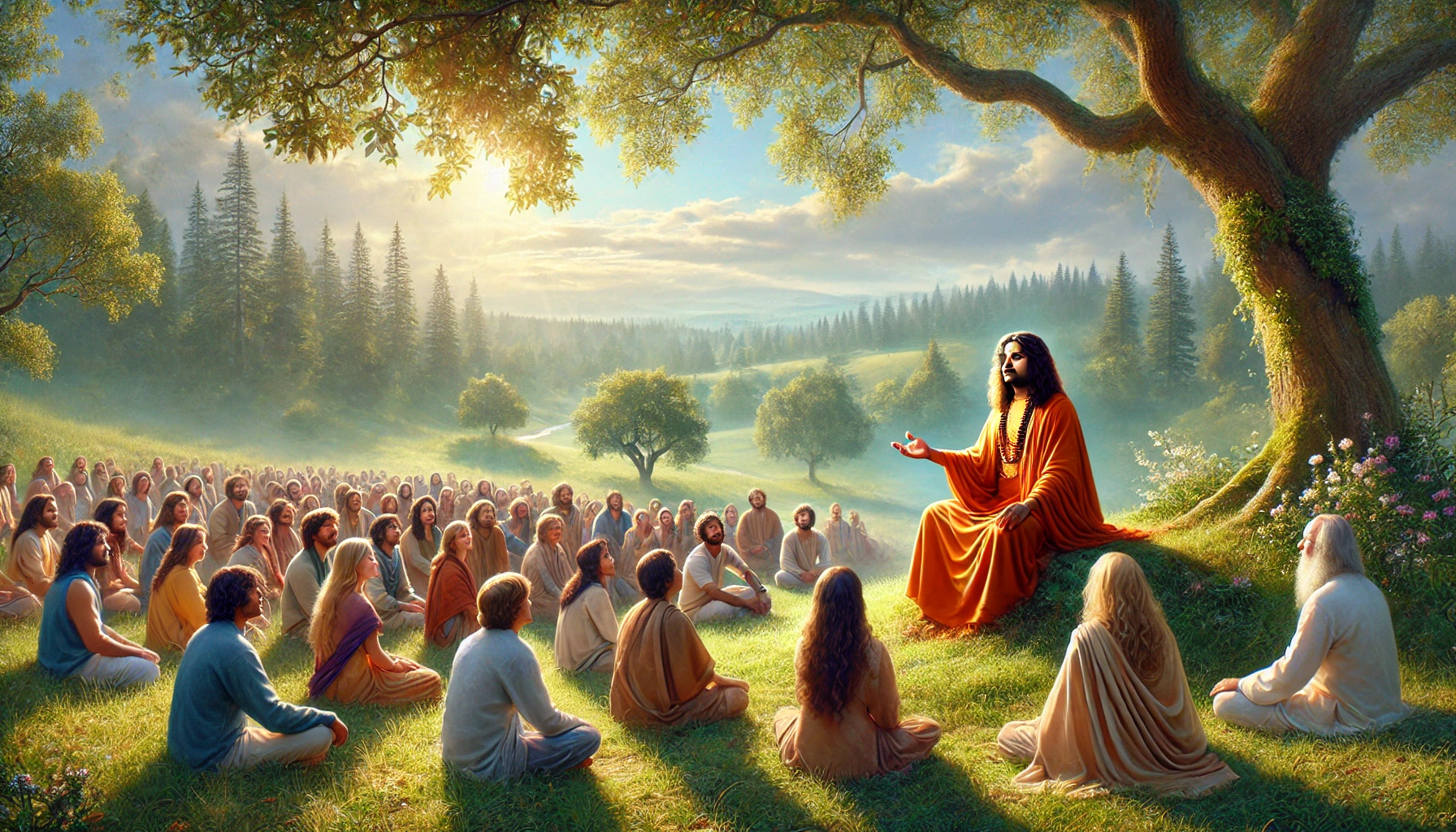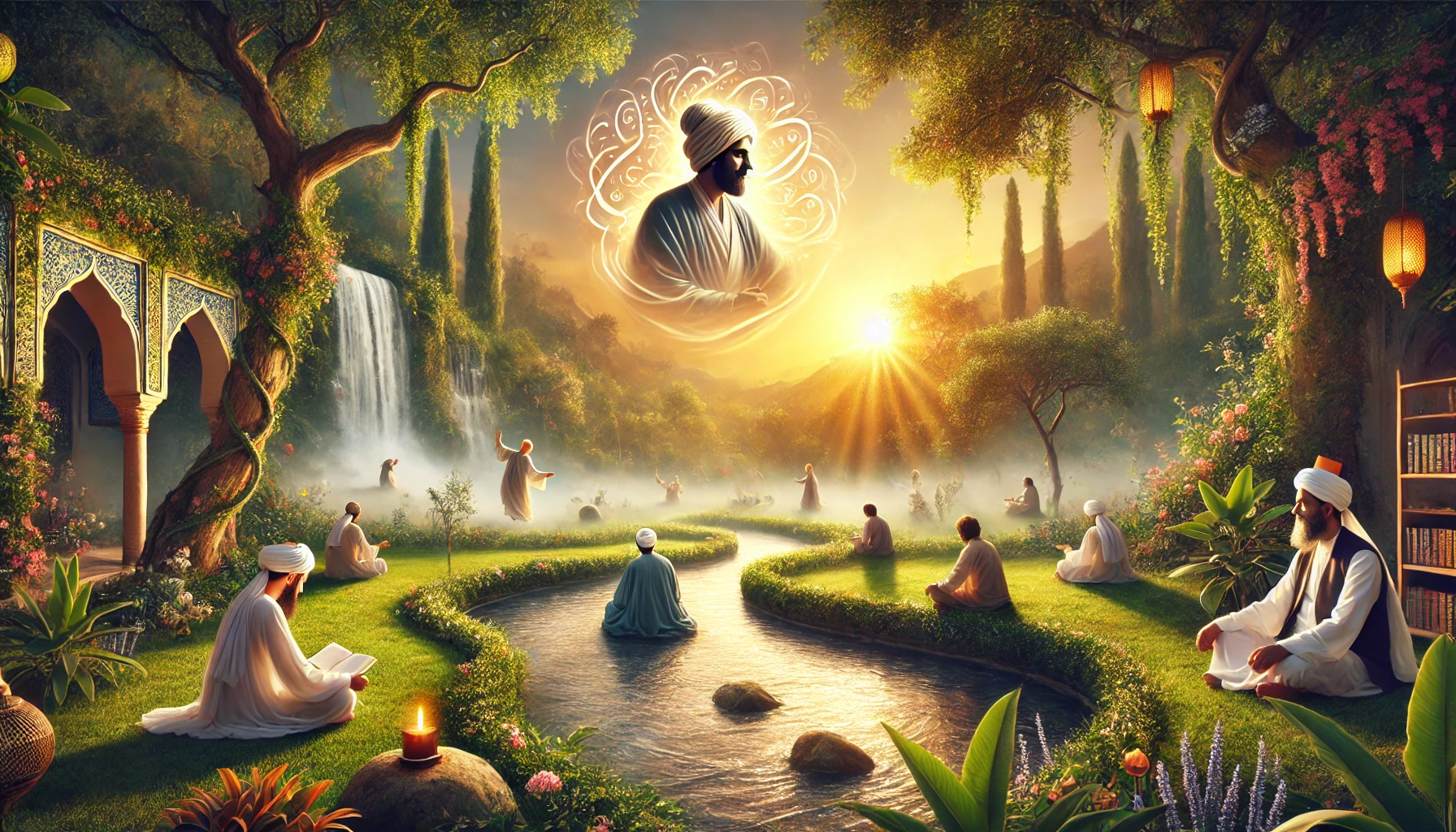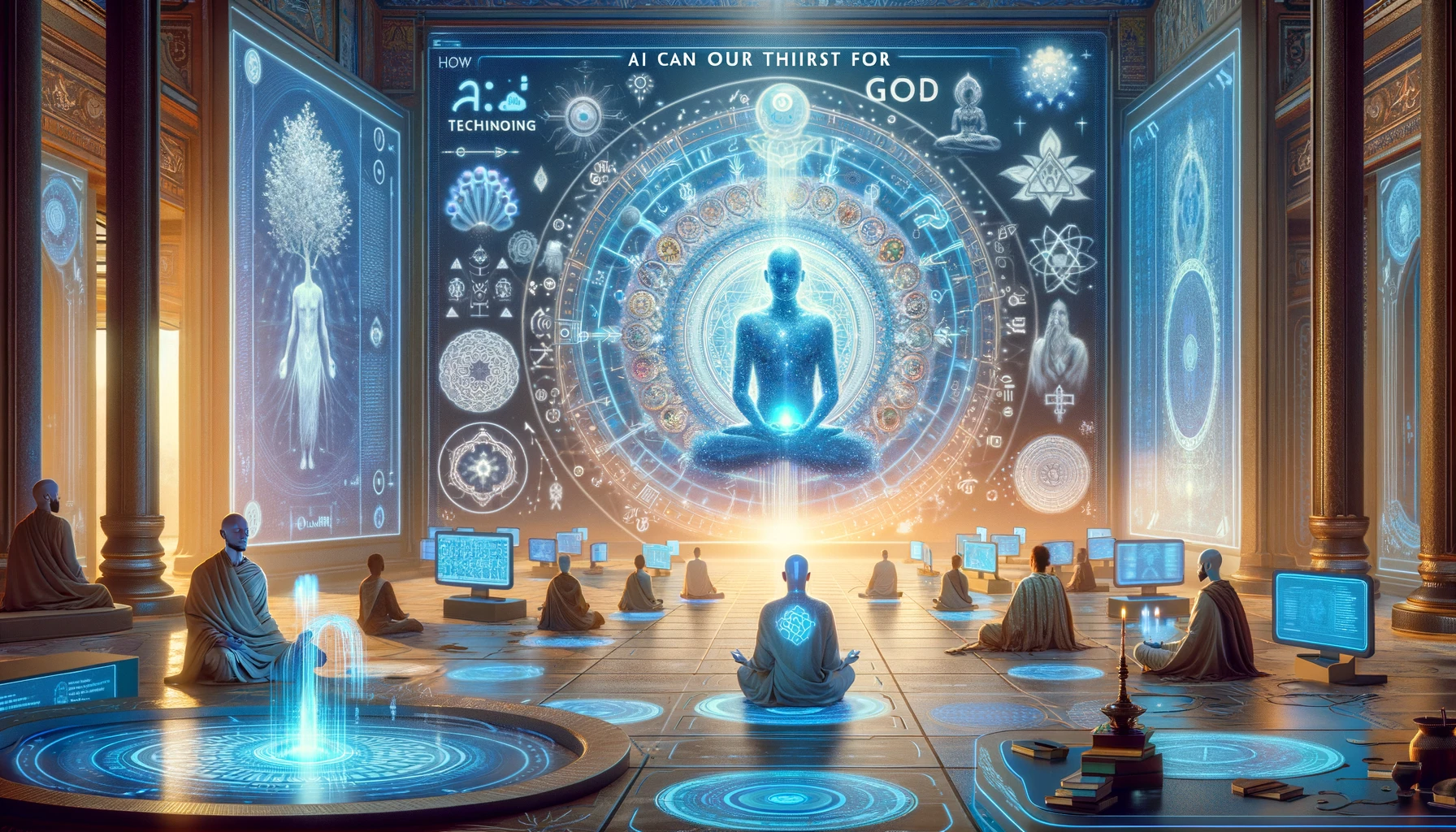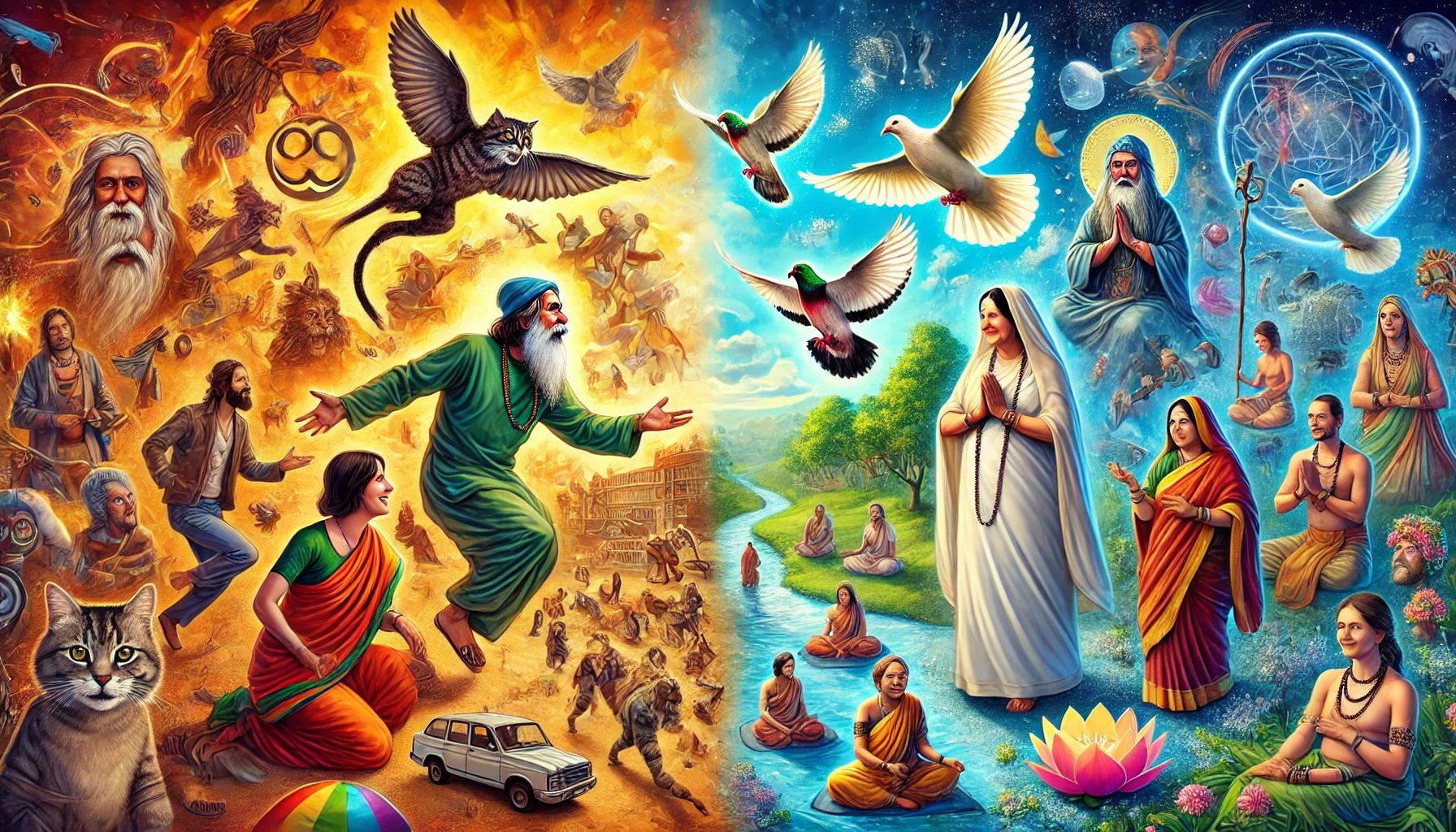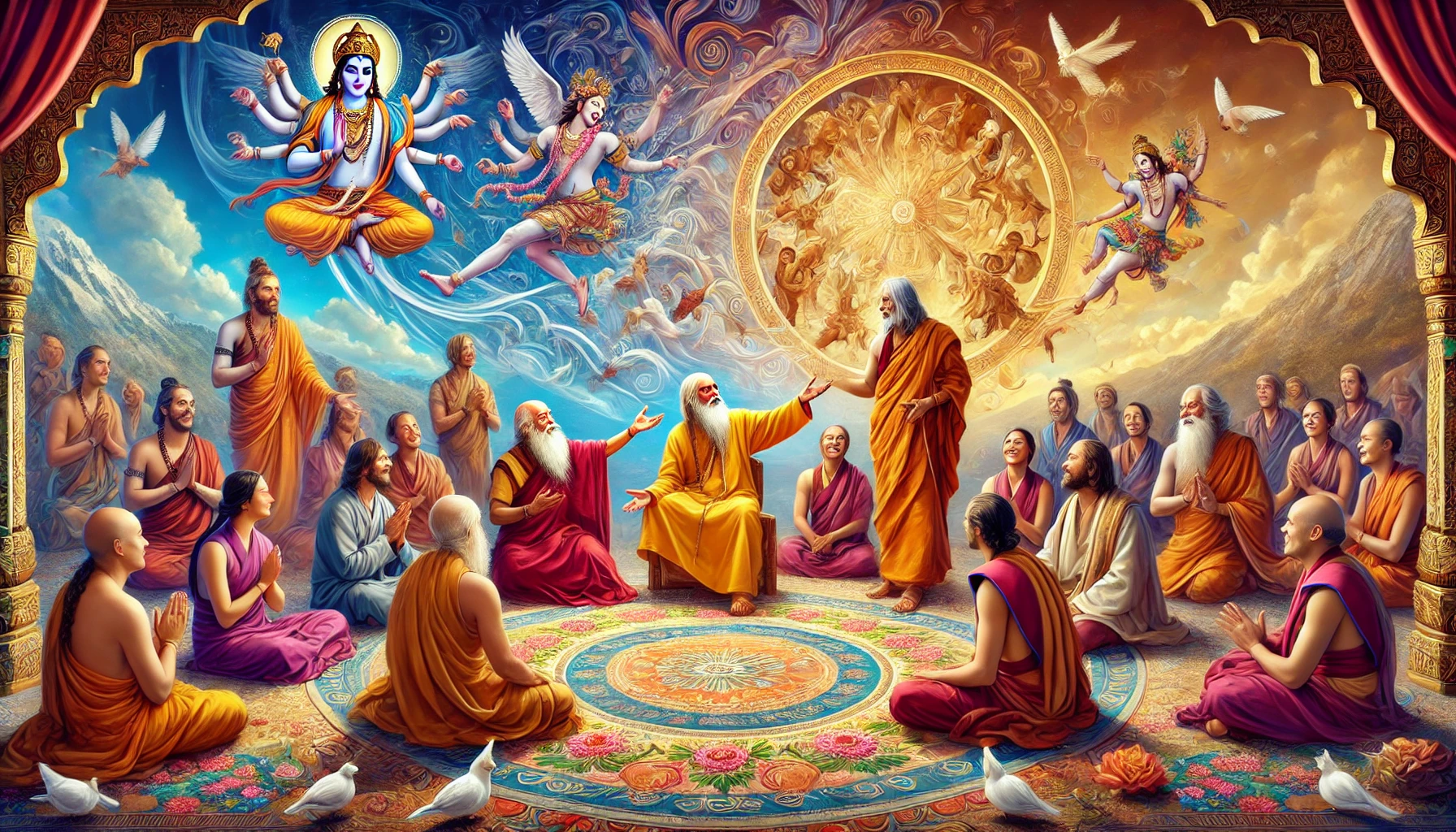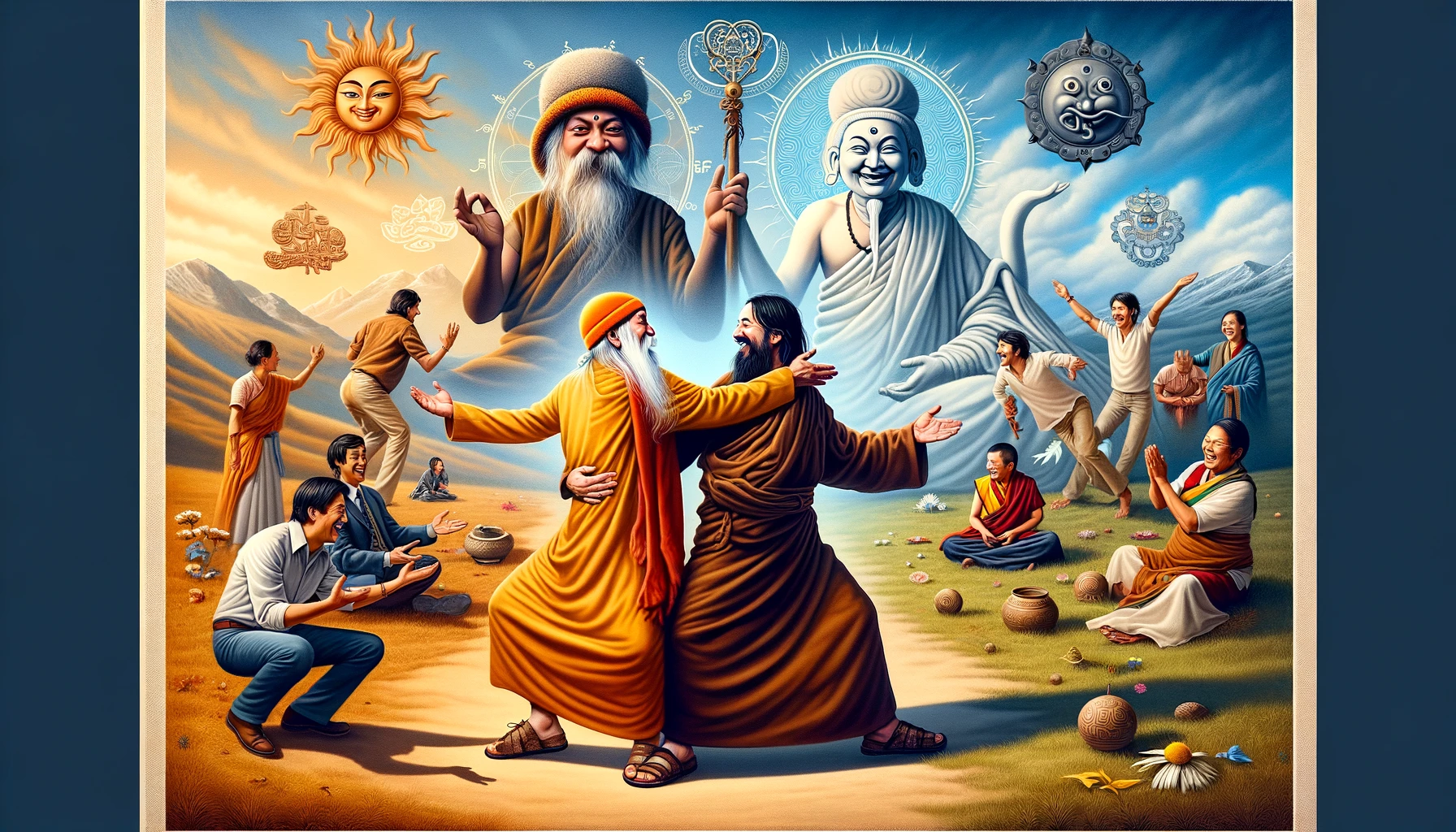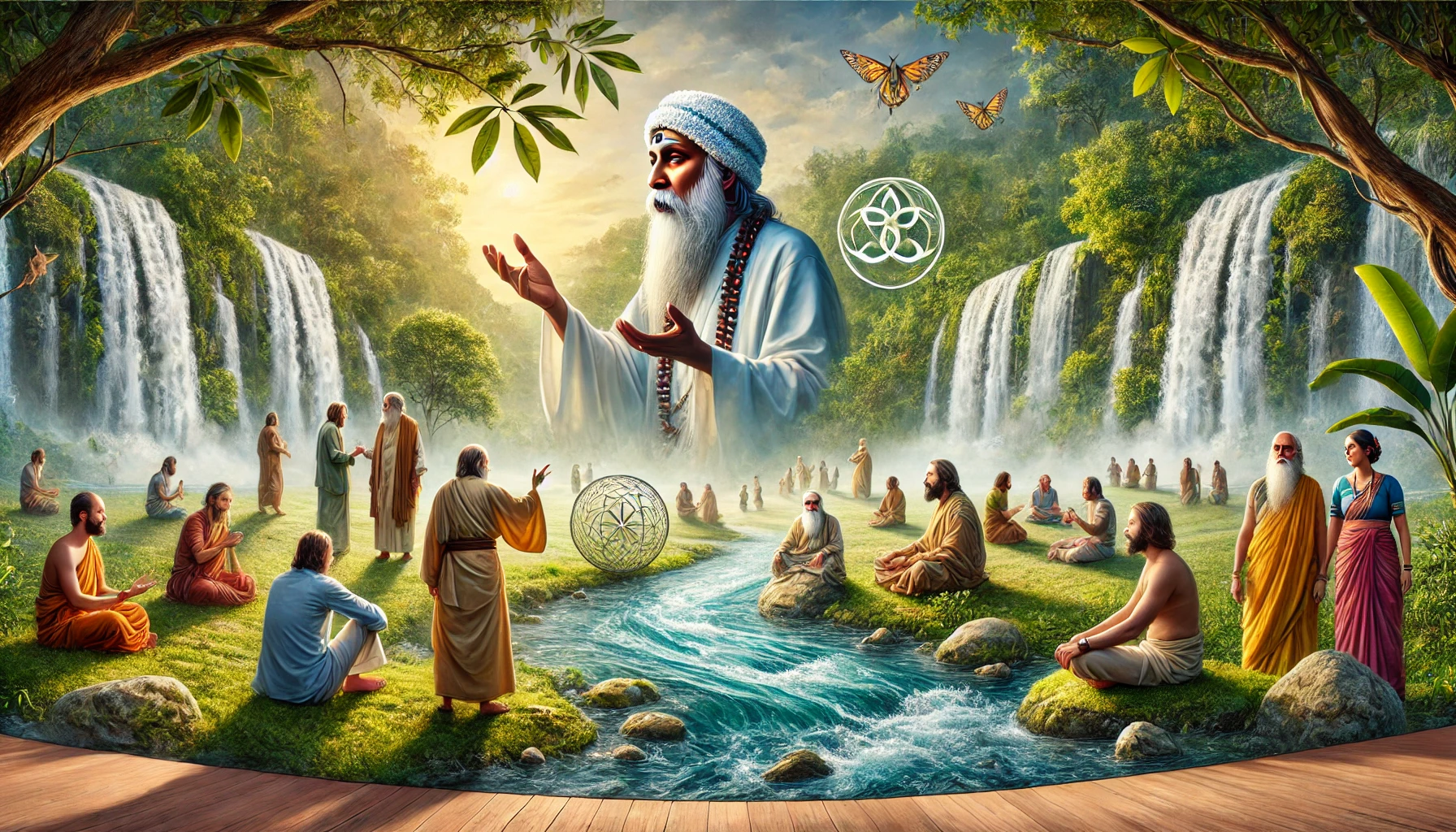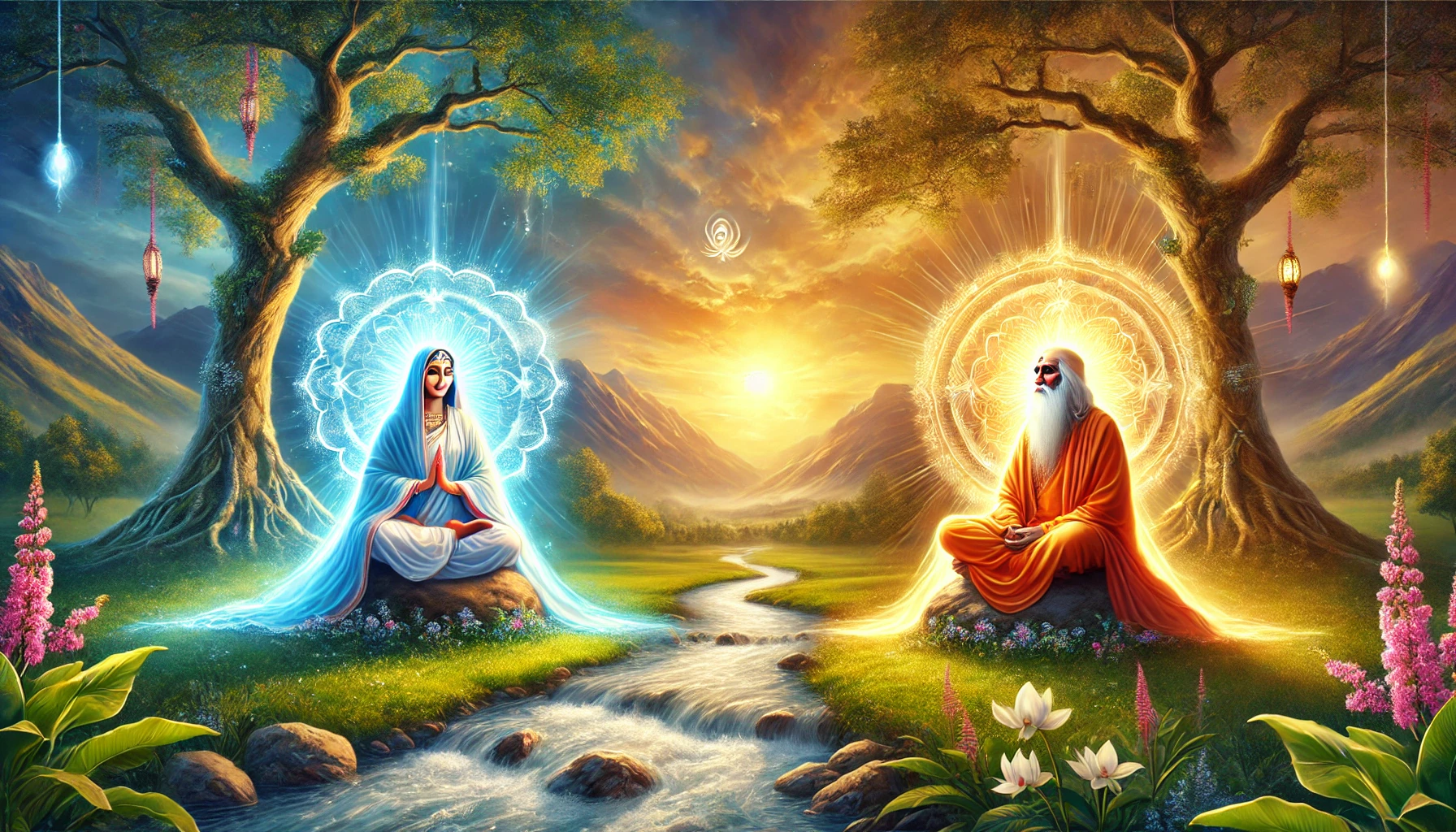
Spirit Conversations with Osho and Amma: A Journey of Divine Dialogue
In the quiet moments of introspection, I found myself drawn into conversations with enlightened beings, notably Osho and Amma. These dialogues revealed to me the depths of my own consciousness and the pathways to spiritual awakening that are accessible to us all. By opening our hearts and minds, we can all tap into these divine conversations and uncover the wisdom that lies within.
Osho’s Revelations: Seeing Beyond the Illusions
“You know,” Osho began, his presence as vivid as the sun breaking through a cloudy sky, “I did not realize that I was not fully realized until I saw Sheela’s penetration into my experience. I saw her as a daughter, and that became a solace and blind spot to me. That prevented me from writing more purely and with greater light. Now I see clearly that steps are required for all Beings, even masters. The grumpy and the angry are all part of it—even after you’re enlightened. We still miss things.”
In this moment, Osho’s words resonated deeply. His admission of vulnerability and imperfection was a profound reminder that enlightenment is not a final destination but a continuous journey. Even those we regard as spiritual masters have their blind spots and moments of struggle.
“I miss you, my friend,” he continued, “as I see myself in you and in every person. I wish to merge with you all again. But for now, I am in spirit, feeling into the expansiveness I forged during my prior life. It’s as I said, a daughter, a shield, a bounty of aggression that I never had to embody because of her commitment to it—this was my blind spot and my final piece.”
The Dance of Realization: Moving Beyond Ego and Projections
Osho’s words echoed a deep truth: “Without authorities, without God, without Bibles and Vedas, man will fall upon his own consciousness.” He then added with a hint of challenge, “I also feel this is bullshit in another way—because man will fall upon his own habits, one of which is projection. He’ll just invent a God and deny himself the privilege.”
This realization struck a chord. It became clear that the journey towards self-realization is not about rejecting external guides but understanding that they are stepping stones towards a deeper truth. The egoic interpretations of teachings often start with the notion that nothing is helpful except the self now. But, as Osho highlighted, we need to start somewhere. These initial teachings infuse kernels of light and awareness into our paradigms, leading us to burst forth and release it all.
“He is a brother to me,” Osho reflected, “and a teacher. I feel him so clearly in my sphere, walking with me—where we hand things back and forth to each other.”
Embracing the Divine Within: I Am That I Am
In this spiritual journey, I have come to understand that referring to these enlightened beings as gurus is no longer necessary. Stepping into the awareness of “I Am That I Am” has allowed me to see the minutia of cracks—the substratum aspects that will heal and clear over time towards the full embodiment of that divine essence.
I had a dream last night, a profound encounter where I confronted Amma and gave her a teaching she was not aware of. She appreciated it deeply. It was bound to happen that I would see everything differently. I didn’t see myself as having arrived anywhere and do not feel that is necessary. However, the realization that I am valuable in my level of awareness—whatever that is deemed to be, by whomever—is new and enjoyable.
This journey has also brought me to a place of playful disdain for myself. It has been helpful, keeping my pure spirit aware of the ideations and projections that block me. Plus, it’s fun to be tough on myself and overall grumpy. It’s a spiritual lens that gives me great insight.
Amma’s Grace: Nurturing the Heart
In a serene meditation, Amma’s presence enveloped me with warmth and compassion. “My child,” she said, her voice like a soothing balm, “you have traveled far on this path. The love and light you seek are within you. Do not be disheartened by the shadows; they are merely the backdrop against which your light shines.”
Her words reminded me of the importance of self-compassion. “In every moment of doubt and despair, remember that you are loved beyond measure. The divine does not judge you for your imperfections; it celebrates your journey towards wholeness.”
“I had a dream,” I shared with her, “where I offered you a teaching, and you received it with gratitude.”
Amma smiled, her eyes twinkling with wisdom. “That is because every soul, no matter how enlightened, has something to learn and something to teach. We are all students and teachers in this grand dance of life.”
Conversations with My Higher Self: The Inner Guru
In the stillness of a quiet morning, I felt the presence of my higher self, the inner guru that resides within us all. “Why do you seek external validation?” it asked gently. “The answers you seek are within you.”
“I seek guidance,” I replied, “because I fear I am not enough.”
“You are enough,” my higher self affirmed. “You are a spark of the divine, a fragment of the infinite. Embrace your journey with all its twists and turns. Each step is a part of your awakening.”
This dialogue with my higher self reminded me that true enlightenment comes from within. It is not about reaching a destination but about embracing the journey and recognizing the divinity within ourselves.
The Collective Consciousness: A Universal Dialogue
One evening, as I meditated under the stars, I felt connected to a vast network of souls, a collective consciousness that transcends time and space. “We are all connected,” a voice whispered. “Our thoughts, our actions, our energies ripple through the universe, touching every soul.”
This realization was profound. The dialogues I had with Osho, Amma, and my higher self were not isolated events. They were part of a larger, universal conversation. Every thought, every prayer, every moment of introspection is a dialogue with the divine.
“We are never alone,” the collective voice continued. “In every moment of silence, the universe speaks to us. In every act of kindness, the divine flows through us. Open your heart and listen.”
Awakening to Divine Dialogues: An Invitation
These conversations with Osho, Amma, my higher self, and the collective consciousness have opened a new realm of understanding for me. They are not unique to me; they are available to anyone who dares to open their heart and mind. The divine is always speaking to us, waiting for us to listen. To enter into dialogue with the divine, all we need to do is be open and try.
Begin by quieting your mind and creating a space for these conversations. Meditate, pray, or simply sit in stillness. Trust that the universe will respond. As you open yourself to these divine dialogues, you will find that the wisdom you seek is already within you, waiting to be revealed.
Let these words inspire you to seek your own spiritual conversations. Embrace the journey of self-discovery and illumination. The path may be winding and filled with challenges, but the rewards are boundless. Awaken to the divine within and let your spirit soar.
The Shankara Oracle can awaken you to walking with the masters throughout time. Get yours today.
Get The Shankara Oracle and dramatically improve your perspective, relationships, authentic Self, and life.



